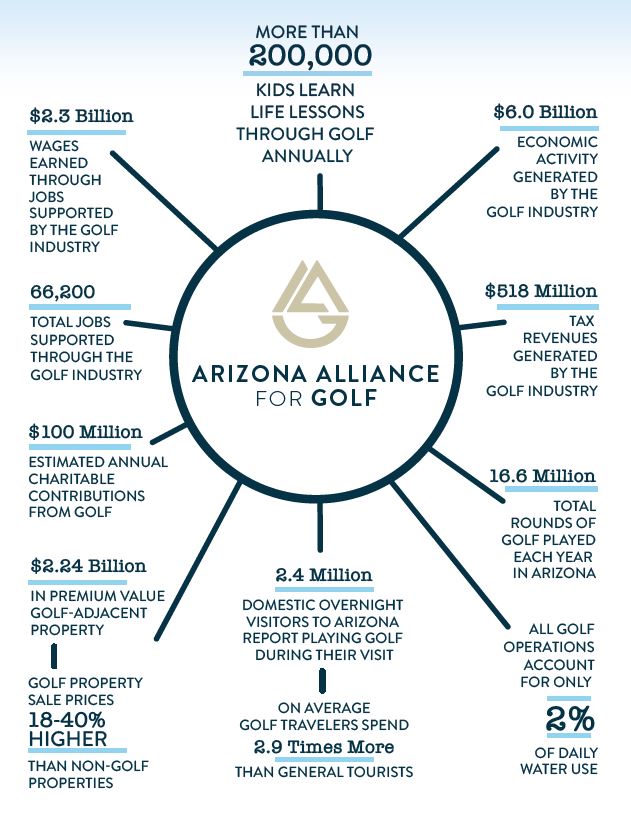Arizona Golf Industry: $6 billion economic impact, 2% water use
In 2021, Arizona’s golf industry produced an estimated $6 billion in economic activity while only using 2% of daily statewide water to serve 16.6 million golf rounds. This economic output supported nearly 66,200 jobs, provided $2.3 billion in wages and generated $518 million in state and local tax revenues.
Study of Golf’s Economic and Environmental Impact
These and other finding were uncovered by an Arizona golf industry study released in January 2023 conducted by Rounds Consulting Group, in partnership with the Arizona Alliance for Golf. Titled “The Economic Contribution of Arizona’s Golf Industry,” the study gathered and quantified the economic and environmental impacts directly and indirectly influenced by golf in Arizona during 2021.
